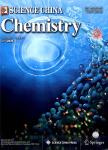Naphthalene diimide-based cathode interlayer material enables 20.2% efficiency in organic photovoltaic cells
作者机构:State Key Laboratory of Polymer Physics and Chemistry Beijing National Laboratory for Molecular Sciences Institute of Chemistry Chinese Academy of Sciences University of Chinese Academy of Sciences School of Physics State Key Laboratory of Crystal Materials Shandong University Beijing Advanced Innovation Center for Soft Matter Science and Engineering College of Materials Science and Engineering Beijing University of Chemical Technology School of Materials Science and Engineering Tianjin University
出 版 物:《Science China Chemistry》 (中国科学:化学(英文版))
年 卷 期:2024年
核心收录:
学科分类:08[工学] 0805[工学-材料科学与工程(可授工学、理学学位)] 080502[工学-材料学]
基 金:supported by the National Natural Science Foundation of China (22322904, 22275195) the financial support from the Youth Innovation Promotion Association Chinese Academy of Sciences (CAS) (2023036) the financial support from China Postdoctoral Science Foundation (CPSF, 2022M723199, 2024T170943) Postdoctoral Fellowship Program of CPSF (GZB20230772)
摘 要:Cathode interlayer(CIL) materials play an important role in improving the power conversion efficiency(PCE) of organic photovoltaic(OPV) cells. However, the current understanding of the structure-property relationship in CIL materials is limited, and systematic studies in this regard are scarce. Here, two new CIL materials, NDI-PhC 4 and NDI-PhC 6 were synthesized by varying the alkylamine chain length on the NDI-Ph core. Our investigation reveals a systematic variation in the physical and chemical properties of these materials with increasing alkylamine chain length. Specifically, we observe a sequential decrease in melting point and self-doping effect, accompanied by an enhancement in crystallinity. Among these CIL materials, NDI-PhC 4 has a notable balance across various performance metrics. It also exhibits excellent surface modification capabilities, leading to a low surface roughness. Consequently, OPV cells based on NDI-PhC 4 achieve a PCE of 20.2%, which is one of the highest reported efficiencies for OPV cells. In addition, the appropriate melting point of NDI-PhC 4 contributes to the excellent stability of OPV cells.



